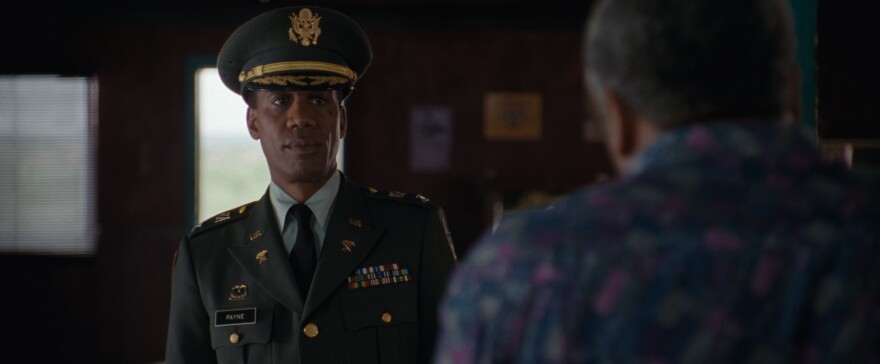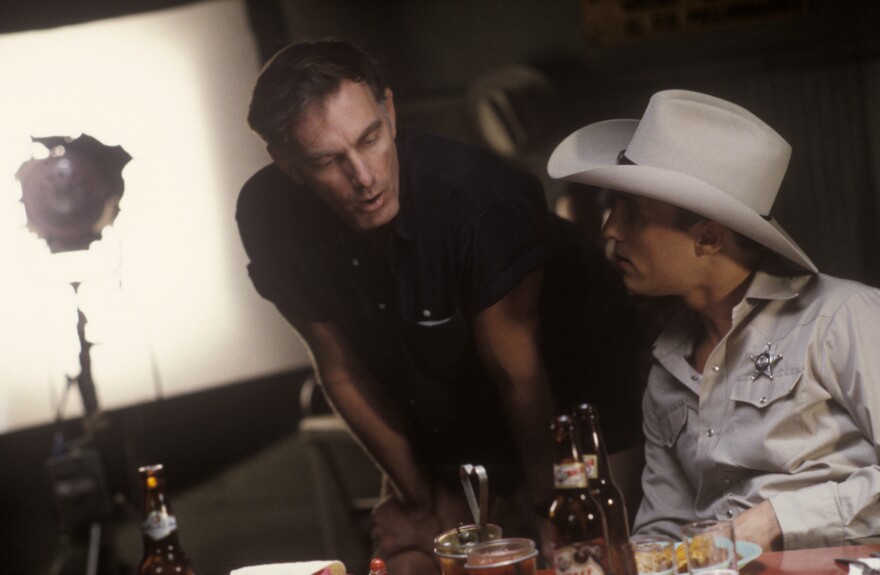Early on in writer and director John Sayles’ film “Lone Star,” there’s a scene that takes place at the local high school in the (imagined) border town of Frontera, Texas. A parent-teacher meeting is in progress, and folks are heated up about the curriculum.
One white mother pipes up, “You're just tearin' everything down! Tearin' down our heritage, tearin' down the memory of people that fought and died for this land.”
A teacher, Pilar (Elizabeth Peña), explains, “I've only been trying to get across some of the complexity of our situation down here—cultures coming together in both negative and positive ways.” Another teacher says, “We’re not changing anything, we’re presenting a more complete picture.”
“And that’s what’s got to stop!” says the white mother.
The meeting acts as a microcosm of the town and a clue to the heart of “Lone Star.” It’s a film that works on several levels -- as a murder mystery, a romance, and as a deep dive into the history of cross-cultural relationships and racial violence in Texas.
The film opens on the discovery of a human skeleton, soon identified as the long-dead sheriff of Rio County, Charlie Wade (played in flashback with calculating cruelty by Kris Kristofferson). Wade had disappeared in 1957 under mysterious circumstances, soon succeeded by Buddy Deeds (Matthew McConaughey). In the present day of 1996, Deeds’ son Sam, played by Chris Cooper, begins an investigation into the case, interviewing everyone from the current mayor to the owner of Frontera’s only Black-friendly watering hole.
Meanwhile, Pilar and Sam rekindle their old teenage romance, much to the disapproval of Pilar’s mother, Mercedes. Pilar glosses over her Mexican heritage, emphasizing her European roots in Spain. But is Mercedes so against her relationship with Sam because he is white? Or is there another reason?

A parallel story finds Col. Delmore Payne (Joe Morton) at a turning point in his personal life and career as a soldier. Returning to town, and meeting his father for the first time in years, he learns there may be more to his own father’s past that may explain some of the choices that led to their estrangement.
To say any more would be to rob you of a sweet, slow, onion-peel plot that has been meticulously structured by Sayles, a brilliant director who is first and foremost a great writer. But in “Lone Star,” Sayles’s visual style echoes the great Westerns of the past, especially Sergio Leone films, with their use of close-ups and character framing within the scope widescreen frame. And in a brilliant move, flashbacks are created in-camera, as the frame pans away from present day characters to the past, as if memories are willed back into present-day focus by whoever is telling the story. Instead of cutting to the flashback, the camera moves effectively dissolve the barrier between past and present.
Eventually, the mystery is revealed, and we learn that the players in the film are more interconnected with one another than perhaps they even knew. It all leads to a final line, “Forget the Alamo.”
In an interview conducted by Gregory Nava on The Criterion Collection’s essential new 4K and Blu-ray disc of “Lone Star,” Sayles explains:

“There’s this official story. And there are these official rules. And they’re just messing us up. That’s not a useful legend. You see [Pilar] in that school board meeting, where parents and teachers are slugging it out. This is a long time ago, and these fights are still happening, very well-funded by the people who don’t want to teach the actual history of what went on, because it’s not celebratory.”
Apart from being a scene that could have been shot in 2021, when a book by that very title, “Forget the Alamo,” was pilloried by Texas lawmakers, leading to a high-profile author talk cancellation at the Bob Bullock Texas State History Museum, “Forget the Alamo” in the context of “Lone Star” is a way to bring the macro back down to the individual players. Pilar and Sam, Col. Payne and his father, Buddy Deeds and Charlie Wade, Mercedes and… well, I won’t reveal it… they all made personal choices that lead to societal change, according to Nava. These individual choices, built up over time, may have far greater impact than one battle at a former Spanish mission.
The most famous line in John Ford’s 1962 Western “The Man Who Shot Liberty Valance” goes, “When the legend becomes fact, print the legend.” That story took place more than 120 years ago. Nowadays, we have access to more research than ever before, and legends, while they make a rousing story, are far less interesting than the complicated push-and-pull of history writ small, rather than large.
“Lone Star,” one of our best modern Westerns, seems to have been prescient in its depiction of the fights over textbooks and the teaching of history that we’re going through – not only in Texas, but across the nation.
But in depicting a more complicated version of life along the border, “Lone Star” also does something that the best films can do. It places us in someone else’s shoes, and it illustrates that when it comes to our own interconnectedness and family ties, there are ultimately no borders.
'LONE STAR' on Blu-ray

Even though "Lone Star" is a film colored mostly by the flat, muted tones of the desert southwest, the new Criterion 4K disc of "Lone Star" looks great and the gradient in dark scenes feels natural. The disc includes the aforementioned conversation between Gregory Nava and John Sayles that stretches to a generous length, over 30 minutes, and is full of insight into the film as well as independent filmmaking. Cinematographer Stuart Dryburgh is given a special feature as well, and it is fascinating to hear stories of how the film was designed and shot on location, and it's especially interesting to hear the process behind those innovative flashback scenes. The release also comes with a handsome booklet featuring an essay by UT-Austin scholar Dr. Domino R. Perez. Highly recommended!





